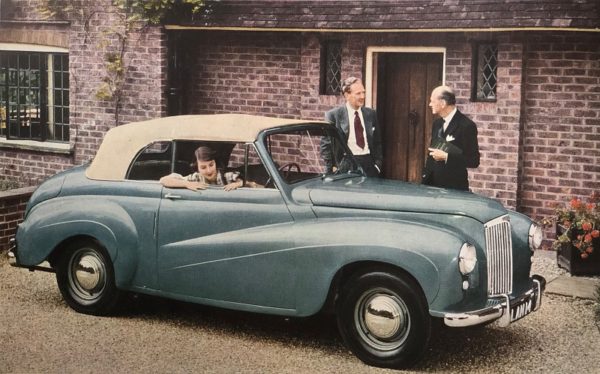
This most British of photographs is full of references to a genteel middle-class post-war world – where ladies were immaculately coiffured, and men wore suits and ties and perfectly ironed linen handkerchiefs in their top pockets.
This is the milieu within which Lanchester was trying to attract custom. But this image, late in 1952, is very close to the final demise of a once-great British firm.
Frederick Lanchester was one of the greatest and most influential automobile engineers of the 19th and 20th centuries. With his two brothers, George and Frank, he founded a company to manufacture a car from sound engineering first principles rather than as a horseless carriage with an engine.
The first Lanchester was designed in 1895 and ran in early 1896 – and is thus arguably the first truly British-made car. The first production cars, sold from 1901, amply demonstrated Frederick’s innovative thinking with their use of perfectly balanced contra-rotating crankshafts, epicyclic gearbox and disc brakes. Innovation continued in 1904 with pressure lubrication, very unusual at the time.
Frederick left the company in 1913, and after the first world war more conventional models included the excellent Lanchester Forty. The depression effectively killed the company and forced its takeover by BSA, already owners of the Daimler company. From then on Lanchesters increasingly became badge-engineered versions of Daimlers: the Ten of 1933 was an upmarket version of the BSA Ten and the Fourteen Roadrider of 1937 was almost identical to the Daimler New Fifteen, including its use of the Daimler fluid flywheel preselector gearbox. In 1936, the Duke of York, always preferring the less ostentatious Lanchester to the Daimler, commissioned a pair of specially built Daimler straight-eight limousines with the Lanchester grille and badges.
In 1950, the Lanchester Fourteen was clad in entirely new coachbuilt bodies (in two-door convertible form, as we see here, and as a four-door saloon). The Leda version for export carried a lighter all-steel body, identical in appearance.
The 1953 Daimler Conquest appropriated the Leda’s design, and the Fourteen died out in 1954. Apart from a prototype Sprite in 1954, this was the end of Lanchester production. Ladies with perfect hair styling and immaculately dressed gentlemen could not save it.
Picture courtesy of the Richard Roberts Archive







Leave a Comment